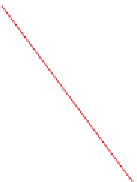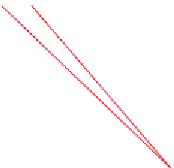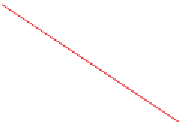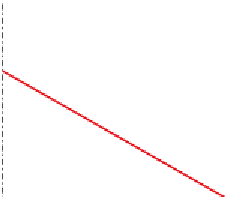Biomedical Engineering Reference
In-Depth Information
formation of these fringes is fundamental because they play an important role in the process
of retrieving information from the recorded images.
Figure 17.5
presents a model for the
process of generation of the evanescent electromagnetic fields that provide the energy
required for the formation of the images. In this model, a grating simulates the diffraction
effect arising from the presence of residual stresses in the upper layer of the prism. This
effect is discussed in detail in Ref.
[15]
.
Guillemet
[16]
analyzed the process of interference fringe formation originated by
evanescent illumination in the presence of residual stresses on glass surfaces. The glass in
the neighborhood of its surface can be treated as a layered medium and the fringe orders
depend on the refraction index gradients.
Figure 17.6A
represents the outer layer of the prism that is subject to a quasi isotropic state
of compressive stresses
[15]
. This outer layer undergoes a biaxial stress state. The ellipsoids
of the index of refraction of the equivalent birefringent crystal are surfaces of revolution
with the optical axis directed horizontally as is shown in
Figure 17.6A
. In this figure, the
intersection of the ellipsoids with the element of the glass prism surface is represented.
There are two indices of refraction: the ordinary beam refraction index
n
o
and the
extraordinary beam refraction index
n
e
. Since glass is a negative crystal, the ordinary
wavefront has the largest index of refraction. The axes of the ellipsoids are along the lines
where
n
e
5
n
o
.
Multiple diffraction orders
-2 -1
0
1
2
Multiple reflection beams
Saline solution
n
s
≈
1.36
Microscopic slide
1 mm
n
p
≈
1.55
Matching index oil
Cross-grating simulating
the outer layer of prism
θ
c
= 61.33°
Z
Y
n
n
≈
1.55
Supporting prism
Laser beam inclined at
critical angle
X
Figure 17.5
Model of the interface between the supporting prism and the microscope slide as a diffraction
grating causing the impinging laser beam to split into different diffraction orders
[10]
.











































































































































































































































































Search WWH ::

Custom Search